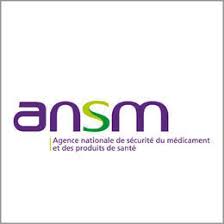The association, via its president Emmanuelle Huet-Mignaton, participates in the working group- CST on the risk of meningioma with progestin drugs.
https://ansm.sante.fr/evenements/comite-progestifs-et-risque-de-meningiome
We are satisfied with the Communication of the ANSM, particularly on the "class effect".
The prescribers must realize that the risk of meningiomas is not linked to a single or even 3 drugs, macro -rogestatives, but potentially to all because it is the dose (and the duration of treatment) which induces meningioma.
ANSM communication on 03/2/2023
Following the Committee of Experts made up of representatives of treated and health professionals, who met in January 2023, first recommendations were established in order to supervise the risk of meningioma for Médrogestone (Colprone), Progesterone to 100 mg and 200 mg (Utrogestan and Generics), Dydrogesteron (Duphaston) and Dienogest ( of Visanne), pending the results of epidemiological studies in progress.
Progestatives are drugs used in various gynecological pathologies (endometriosis, fibroids, particularly long and/or abundant rules, cycle disorders), in the substitute hormonal treatment (including menopause); But also in obstetrics (sterility by luteal insufficiency, repeated abortions).
Between 2019 and 2020, successive epidemiological studies have demonstrated a risk of meningioma, which increases with the dose received, for three progestins (Androcur, Lutenyl, Lutéran and Generics). Following these studies, we then implemented many measures to limit this risk.
As part of the reinforced surveillance that we lead to all the progestins, we have observed cases of meningioma occurring during treatments by other progestins .
In this context, we wanted to bring together a temporary scientific committee (CST) made up of representatives of treated persons as well as health professionals to develop recommendations on the conditions of use of progestins, other than those based on cyproterone acetate (ACP), Nomestrol (ANMG) and Chlormadinone (ACM), with regard to the risk of meningioma. It was a question of ensuring that the people for whom these treatments are justified can continue to benefit from it in secure conditions.
The CST believes that a "class" effect of progestins on the risk of meningiomas cannot be excluded and has established first recommendations in order to limit this risk pending epidemiological studies, carried out by Epi-Phare, making it possible to confirm or deny this risk. The results of these studies should be available soon.
Among the cases of meningiomas declared under progestin treatment, those reported with medrogestone (colprone) and progesterone at 100 mg and 200 mg (utrogestan and generics), are particularly suggestive of a role of these drugs given stabilization or tumor regression when stopping treatment. Thus, the summary of the characteristics of the product (RCP) and the Colprone manual has just been updated in order to include the risk of meningioma. In addition, progesterone at 100 mg and 200 mg being also used in other countries of the European Community, we have asked that this subject is the subject of a discussion at the European Pharmacovigilance Committee (PRAC) .
- In the event of a history of meningioma or existing meningioma, the introduction of a progestin treatment is contraindicated, with the exception of an assessment in a multidisciplinary consultation meeting (consisting of gynecologist and/or endocrinologist and neurosurgeon) on the basis of the benefit/individual risk ratio for the treated persons and the presence or not of therapeutic alternatives;
- The prescription of a new progestogy in relay of anterior treatment by aceate of cyproterone, chlormadinone or nomigestrol does not exclude the risk of meningioma, without it being possible for the moment to determine it. It is necessary, before any new prescription or switch between progestins, to verify all the progestins already used and their duration of use;
- The treatment must be prescribed at the minimum effective dose with the shortest possible duration of use;
- The interest in continuing treatment must be reassessed regularly (every year), especially around menopause, the risk of meningioma increasingly increasing with age;
- A brain MRI will have to be carried out in the event of neurological clinical signs evocative of meningioma (headache, vision, language, memory and hearing, nausea, dizziness, convulsions, loss of smell, weakness or paralysis).
In the general population, it is estimated that 9 in 100,000 people are likely to develop meningiom each year. Meningioma represents more than one primary brain tumor (without metastasus) in three; It is the most common brain tumor from 35 years old .
Age, female gender and exposure to ionizing radiation in childhood (diagnostic imaging examination, scanner, scintigraphy) constitute clearly identified risk factors .





